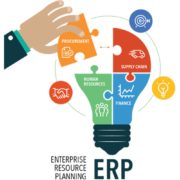How can Enterprise Architecture (EA) benefit your business model and organization?
As described in American National Standards Institute/ Institute of Electrical and Electronics Engineers an architecture is “the fundamental organization of a system, embodied in its components, their relationships to each other and the environment, and the principles governing its design and evolution.” It is not a new concept, in fact. Enterprise Аrchitecture has been around since the 1960s.
Enterprise Аrchitecture (EA) aims to create a unified IT environment across the organization, to promote alignment, standardization and reuse of existing IT assets. In fact, EA defines how your organization will meet its business problems in future. It is one of the most powerful management approaches that can be used by an organization. The best part is that it is not intended to be used only at a project level but also for the big decisions that have to be made at a leadership level.
The focus of EA can be roughly summed up in the following points:
• Identifying areas for consolidating
• Reducing costs
• Increasing the return on business investments by aligning them with business needs
• Delivering change initiatives
• Improving executive decision making
We should also add that EA is focused on strategic planning and not on operational change. It is related to the whole of the business (business model, business transformation), and not to one of its components. Therefore, EA is focused on the long-term view and development, and not on the currents state of the business. So its primary purpose and function is to support strategic change and bring in initiatives in this direction.
Benefits of EA for your organization
Why and how does Еnterprise Аrchitecture maximize your organizational value? A rock solid EA really has the potential to transform an organization. EA can affect any architectural domain: strategy, data, business, infrastructure, applications, security. Its strategies support IT growth, the modernization of IT as a department, and digital transformation. Modern EA strategies extend to the entire business, not just the IT. That is to ensure business is aligned with digital transformation strategies and technological growth.
• EA is guided by the organization’s requirements – therefore it helps information, technology and business flow together.
• It offers support for re-organization during major organizational changes.
• EA helps in standardizing and consolidating processes.
• Reduces risk, system failures and eliminates mistakes.
• Makes IT more accessible to other business units, allowing collaboration between them.
• Establishes processes and strategies for long-term development.
• Helps businesses in prioritizing investments.
Creating an Еnterprise Аrchitecture of your own
You can call it a digital transformation strategy or smart business – EA is definitely a method your company can and should use to align its IT infrastructure with business goals. To survive and make your way in the world of digital transformation, you need an agile plan and that us what EA strategies can give you.
In the first place, you need to think from every perspective – of an employee, customer, and of meeting your business goals.
A quite neglected piece of advice, related to developing EA, is using a common language. Enterprise architecture is of no use if only the IT geeks in the company can understand it. After all, as we already mentioned, one of the purposes of EA is to allow collaboration between the different units. EA is something to help your organization function efficiently in the digital world.
One thing you should have in mind is that EA is not a miracle creator. It will save you money and improve efficiency, but will not be fully beneficial if you are holding onto old business models or making bad business decisions in general.
EA has to be agile. It should be standard enough to help your organization move forward, but also general enough so that it can move with the market. Last but not least, choose and use your EA wisely, because it changes how you do business.












Leave a Reply
Want to join the discussion?Feel free to contribute!